Honoring the fruits of Chávez’s labor
March 21, 2012
César Chávez’s legacy has long inspired philanthropy. Now a couple of Los Angeles groups are hoping it will inspire some “fruitanthropy,” too.
L.A. Works and Food Forward are recruiting volunteers to pick and sort fruit at various locations in the San Fernando Valley this weekend. The resulting harvest will be donated to local food pantries. Those efforts will culminate at the César Chávez Day of Service on Friday, March 30, when there will be a large morning picking session, followed by a food justice discussion with the organizers of the event. SOVA Community Food and Resource Program will pick up the day’s bounty on-site when the work is done.
It’s all part of the César Chávez Commemorative Week of Service.
“We wanted to bring the day back to the roots of the holiday and highlight some of the themes that revolve around César Chávez’s work,” said Becca Bloom, director of programs at L.A. Works. “Food justice seemed like the perfect fit.”
Volunteers can sign up online for the three “fruitanthopy” opportunities in the San Fernando Valley this weekend, March 24 and 25, or sign up for the final event next Friday, March 30. There will be a brief training session before each outing to make sure good fruit is picked and property is not damaged in the process.
L.A. Works is a nonprofit organization that functions as a recruiting center for community service projects across greater Los Angeles. Since 1991, its volunteers have logged more than a million service hours while providing more than 425,000 meals to homeless and low-income individuals, conserving and restoring the environment, educating children, caring for shelter pets and more. Visit its website for a full calendar of volunteer opportunities near you.
For the César Chávez Week of Service, L.A. Works is joining forces with Food Forward, a nonprofit group that fights urban hunger and food waste simultaneously by harvesting excess produce.
Chávez came to national attention after mobilizing farm workers and founding a union that became the United Farm Workers. His nonviolent tactics helped the movement—and Chávez himself—earn widespread support.
You can also honor his memory by attending a commemorative march in the Northeast San Fernando Valley on Saturday, March 25. It begins with an 11 a.m. rally at Brand Park and ends with a Cultural Art Festival at Richie Valens Park in Pacoima. Speakers at the rally will include Anthony Chávez, grandson of the activist, and Roberto Gustos, one of the original farm union members from 1965.
Also consider supporting Los Angeles County employees’ César Chávez Community Service Week, which runs from March 26 through 31, by making a donation to the Los Angeles Regional Food Bank.
Posted 3/21/12
A blossoming of international goodwill
March 21, 2012
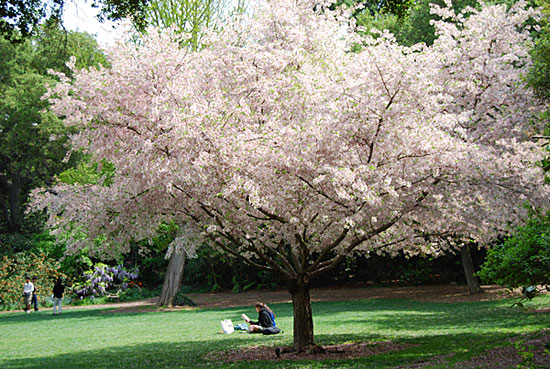
Cherry blossoms at Descanso Gardens in La Cañada Flintridge, where a festival will be held this weekend.
It’s cherry blossom time again, and not just in Washington, D.C.
Southern California will be showered with more delicate pink petals than ever this year, as the region helps observe the 100-year anniversary of a goodwill gesture that turned our nation’s capitol into a blossoming, seasonal Mecca—a 1912 gift from Tokyo of more than 3,000 ornamental cherry trees.
At least a dozen local Cherry Blossom festivals have been scheduled, and trees have been planted from Los Angeles’ Roosevelt High School to Griffith Park. Meanwhile, in May, about 18 saplings will be planted in the new 12-acre Civic Park that’s being developed between City Hall and the Music Center. Embracing the spirit of a century ago, the Japanese Consulate in Los Angeles helped coordinate the donation of most of the region’s new trees through non-profit groups.
“Cherry blossom trees are a living testament to the friendship between Japan and the United States,” says Jun Niimi, Consul General of Japan in Los Angeles.
Elegant and evanescent, Japanese cherry blossom trees, or sakura, are a beloved sign of spring in that country. Few experiences are as dreamlike as the traditional picnic under a cherry tree in full bloom, as leafless boughs create clouds of pale blossoms and petals float on the wind.
The trees took hold in this country early in the 20th century, after Eliza Scidmore, a Washington socialite and travel writer, experienced them in Japan during a trip with her diplomat brother, and returned in 1885 with the notion that they should be planted on reclaimed parkland along the Potomac River.
The National Park Service has the full history, but the shorter version is that for the next 20-plus years, she unsuccessfully lobbied five presidential administrations. Finally, after an official from the U.S. Department of Agriculture proved the trees could survive here, Scidmore caught the attention of First Lady Helen “Nellie” Taft, who had visited Japan while her husband was governor-general of the Philippines during the McKinley Administration. The First Lady got 90 cherry trees planted along the Potomac, then accepted a donation from the Japanese government for thousands more saplings. Although pests infested the first shipment, nearly causing a diplomatic incident, the Japanese followed up with a new donation, and 3,020 cherry trees arrived by rail in Washington,D.C., on March 26, 1912.
By the 1930s, Japan-U.S. tree exchanges had spread throughout the country. In 1933, Los Angeles papers reported that the Japanese Chamber of Commerce was “strengthening the bond of friendship between America and Japan” by seeding Griffith Park with 375 cherry trees.
In 1941, four of the Washington, D.C., trees were vandalized after the Japanese attack on Pearl Harbor, but they generally remained a positive symbol. In fact, the largest stand in Los Angeles County was the result of international goodwill, albeit of the corporate variety. In 1990 and 2009, the Canare Corp., a Japan-based cable manufacturer, donated a total of more than 1,000 cherry trees to Los Angeles to plant at Lake Balboa in the Sepulveda Basin.
“They had an office in the San Fernando Valley and wanted to give back to the city,” recalls James Ward, who at the time was in charge of the maintenance division of the Los Angeles Department of Recreation and Parks. “They even sent some of us back to learn how the Japanese maintain the trees.”
The saplings being donated in Southern California this year have come mainly from two programs, one local, one national.
Locally, the Huntington Botanical Gardens in San Marino made about 1,000 cherry trees available earlier this year to cities and civic groups throughout the region; the trees were mostly of the “Pink Cloud” variety, a unique West Coast hybrid that appeared as a volunteer seedling at the gardens in the 1960s. Nationally, the National Arbor Day Foundation, American Forests, the Japanese Embassy and a variety of Japan-America organizations have joined in a Nationwide Cherry Blossom Tree Planting Initiative to plant some 2,000 more trees.
Of course, beauty has its price. Frank McDonough, botanical information consultant at the Los Angeles County Arboretum & Botanic Garden notes that, except for the Pink Clouds and a few other varieties, the trees aren’t a natural fit in toasty L.A..
“They’re terrible for the landscape, they’re heavy water users and if they don’t get the drainage they like, they’ll leave you.”
But he adds: “People like them—they’re sentimental. And they’re pretty spectacular while they’re here.”
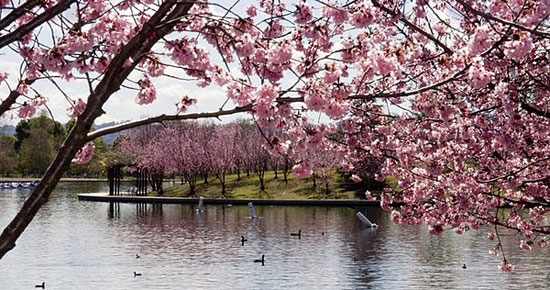
The area's largest stand of cherry trees is at Lake Balboa in Van Nuys, seen here in an earlier year.
Posted 3/21/12
Revisiting an infamous coffee spill
March 21, 2012
In 1994, a jury awarded Stella Liebeck $2.86 million for injuries suffered when she spilled a cup of McDonald’s coffee in her lap. The case got widespread attention as an example of litigation gone wild. This Saturday, the Broad Stage presents a different take on the case in “Hot Coffee.”
The event features a screening of the documentary film Hot Coffee followed by a panel discussion with attorney Brad Seligman, consumer watchdog Harvey Rosenfield, and law professor John Nockleby. The panel will be moderated by Jan Frel, a former managing director of AlterNet.org, and Amy Ziering, an award-winning documentary filmmaker.
Nockelby, who is director of the Civil Justice Program at Loyola Law School, said the popular narrative of a careless and litigious plaintiff is off base. The spill, he said, resulted in extensive third-degree burns which required Liebeck, 79, to undergo skin grafts.
“This was superheated coffee,” Nockelby said. “McDonald’s had hundreds of cases of people burning themselves and refused to lower the temperature until this case.”
The film takes a close look at the lawsuit and the resulting media coverage, which Nockelby contends was influenced heavily by big businesses with an interest in limiting personal injury lawsuits.
To judge for yourself, reserve a seat for the Friday, March 23, event online or by calling (310) 434-3200. Tickets cost $15 and parking is free. Directions to the Santa Monica venue are available on the Broad Stage website.
Posted 3/21/12
Tough times, good partners
March 20, 2012
For the past several years, all of our county labor unions have gone without a pay raise. In the case of our sheriff’s deputies, firefighters, lifeguards, probation officers and public defender investigators, it’s been three straight years.
Now they’re about to make it four in a row.
With the Board of Supervisors’ approval this week of another one-year contract extension with our public safety labor partners, I thought it was time to pause for a moment and say thank you. Our employees’ willingness to step up to the plate in these difficult times is one of the reasons our county finds itself in much better shape, relatively speaking, than most other municipalities throughout California, as well as the state itself.
Our unique and healthy partnership with labor, together with the long-running fiscal discipline shown by the Board of Supervisors, is paying dividends as we continue to weather a difficult economic environment.
I’m not saying that it’s been easy, or painless. But we have gotten through the financial crisis to date without having to lay off or furlough a single employee. This is particularly important in these tough times, when demand for the county’s safety net services soars.
Thanks go as well to my board colleagues and to our Chief Executive Office. Together with our labor partners, I believe we’ve created an atmosphere of mutual trust—one in which relatively modest sacrifices today help avert far more painful consequences tomorrow.
I’ve written in this space before about how we’ve gotten to this point—how our current policies of prudence and restraint grew out of the lessons learned during a financial rough spell back in the mid-1990s when the county was spending beyond its means to the tune of $1 billion a year. That wake-up call, shortly after I joined the Board of Supervisors, is an alarm that none of us wants to hear ever again.
So now, as we see other local and state governments in tumult around us—and as we continue to grapple with hard choices in our own budget—we can take satisfaction in what we’ve been able to accomplish together.
All of our employees are still working. They’re still putting food on their families’ tables. And they’re still serving the people of Los Angeles County. And in this economic environment, that’s a remarkable thing.
Posted 3/20/12
Writing a new chapter, at the beach
March 15, 2012
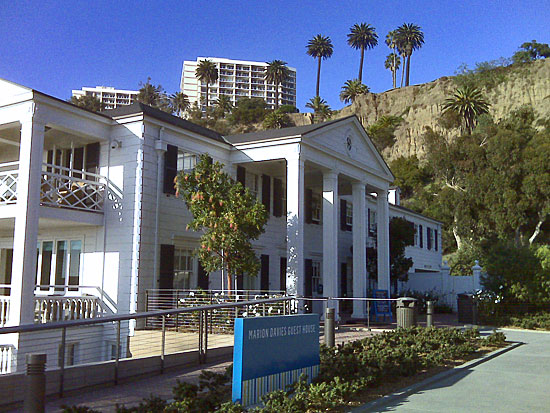
Once it was for guests of early movie star Marion Davies. Now artists like writer Lucy Wang get to work here.
The image of the professional writer is often of the “starving artist” variety—churning out pages in cramped, meager surroundings.
So far in 2012, Lucy Wang’s experience has had a very different look to it.
Wang is about to put a wrap on her artist’s residency at the beautiful—and publicly owned—Annenberg Community Beach House in Santa Monica, where she’s enjoyed a working environment most scribes could only dream of.
“It is definitely different,” said Wang. “People think writers only need something to write on, they don’t need a window. It seems very luxurious there; you have the ocean and the PCH behind you.”
To showcase some of the work that grew out of such idyllic surroundings, Wang will give a public reading at the Beach House on Monday, March 19, from 6:30 p.m. to 8 p.m. Reservations are required for the free event, and directions are available online.
The city of Santa Monica, which operates the beach house, created the residency program to allow artists to work for 10-week periods in extraordinary surroundings while sharing their gifts with the public. As part of the deal, Wang, who lives in Glendale, received free workspace in what was once Marion Davies’ guest house on the legendary property, where early Hollywood stars once frolicked.
Wang wrote a blog during her residency, and also worked to turn her unpublished young adult novel, Teen Mogul, into a play. The novel, like much of Wang’s writing, is semi-autobiographical. It tells the story of a teen who donned business attire one day and got a job at a Chicago marketing research firm.
After Wang’s youthful foray into marketing, she got a Master of Business Administration degree from the University of Chicago (an alumni magazine account of her career’s twists and turns is here) and landed a gig as a bond trader on Wall Street. There, she says, she endured regular insults because of her ethnicity, a theme that permeates much of her writing. When the sudden rise of Asian-American basketball sensation Jeremy Lin became a media phenomenon in February, Wang began writing comedy based on the stereotypes that started leeching from sources as mainstream as ESPN.
Wang also worked for a former New York mayor, David Dinkins, as his deputy chief of staff. She said she owes her writing career to Rudy Giuliani, who defeated Dinkins in the 1993 election, forcing her to take a new path.
That career change seems to have panned out. Her first critical hit—the quasi-autobiographical Junk Bonds—came quickly, in 1994. It was named Best New Play by the Katherine and Lee Chilcote Foundation and the Kennedy Center Fund for New American Plays. Her scripts have been finalists for Sundance Screenwriting Labs and Heideman Awards, and another play, Bird’s Nest Soup, was staged locally at the Mark Taper Forum.
Her residency at the Annenberg Beach House, which began in January 16, has included participating in the “Beach=Culture” community event series. Wang has invited the public to regular storytelling sessions, creating lively literary exchanges on themes including “life-changing foods” and “the soundtrack of your life.”
At her final public event at the beach house on Monday, the author, comedienne and playwright will read samples from Junk Bonds and Teen Mogul, as well as a few other surprises she’s still deciding on. Attendees can expect the serious issues underlying her work to receive a somewhat playful treatment.
“The thread that combines my work is comedy,” said Wang. “It’s kind of black, but it combines all my work.”
Posted 3/15/12
Could be another wet L.A. Marathon
March 14, 2012
When the 2012 L.A. Marathon thunders through town on Sunday, March 18, you’ll either want to be right in the thick of it or way out of its path.
And in either case, you’ll probably want to bring an umbrella. Weather officials said a repeat of last year’s rain-drenched marathon may be in store. The latest from the National Weather Service on the coming cold storm is here.
This course map shows the marathon’s progression over its entire “stadium to the sea” route, starting at Dodger Stadium and finishing by the Pacific Ocean. These “turn-by-turn” directions are also useful. The 26.2-mile course will take participants through downtown L.A., Silverlake, Hollywood, Beverly Hills, Westwood and Brentwood, before ending in Santa Monica.
Rolling street closures will take place along the route, and additional street closures will be enforced to accommodate the event and all its accompanying fanfare. An overview of what to expect is here. There also will be lots of detours on bus routes.
If you decide to venture out to cheer on the runners, you can get there via Metro Rail and at least stay dry for that part of the excursion.
Posted 3/14/12
From toppled trees, art
March 14, 2012
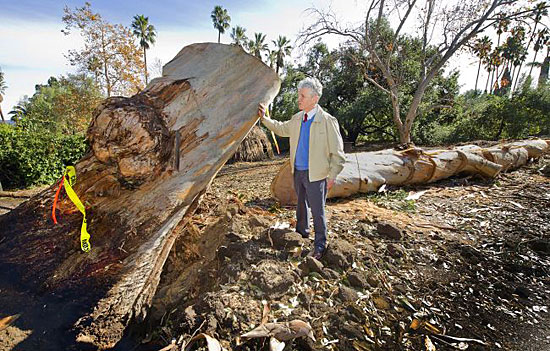
Arboretum CEO Richard Schulhof with one of the hundreds of felled trees. Photo/San Gabriel Valley Tribune
The Los Angeles County Arboretum and Botanic Garden, devastated by last December’s violent windstorms, has some beautiful plans for its fallen trees.
This week, the Board of Supervisors cleared the way for about 100 downed logs and branches to be given to artisans and wood artists to create pieces for a special exhibit and auction benefitting the Arboretum’s continued restoration. The project will be curated by the Arboretum’s artist in residence, Leigh Adams.
“We lost some 235 trees, and several hundred more were damaged,” says Arboretum CEO Richard Schulhof. “Some were total losses, and a lot of that wood has been chipped and is being returned to the soil as mulch here at the Arboretum.
“But we also had piles of tree branches—eucalyptus, oak, coral trees, fig trees. Some of it was very interesting wood that doesn’t grow anywhere else. So after the storm, we had people come up to us and say, ‘What are you going to do with this beautiful wood?’
“And we thought, ‘Why not ask some artists and artisans to do something that speaks to the next generation being planted, and that commemorates the trees that were lost?’”
Because the wood stockpiles are limited, Adams will invite artists to contribute: “We’re looking for people who know and visit the Arboretum, for whom it means something personally,” Schulhof says.
He adds that the auction will be held on the weekend of December 1-2, which is the anniversary of the devastating windstorms. Proceeds will go to the Arboretum Tree Fund established by the nonprofit Los Angeles Arboretum Foundation.
“It will help buy new plantings to replace what was lost,” says Schulhof, “and bring in the Arboretum’s next generation of trees.”
Posted 3/14/12
Double tunnel vision
March 14, 2012

The famed tunnels on Kanan Dume Road, including the ones known as T3, above, are getting new liners.
It just might be the biggest production to hit the tunnels of Kanan Dume Road since 1,000 extras turned out for the 1998 action flick “Deep Impact.”
Two sets of tunnels on the famed, twisting road through the canyons above Malibu are about to get a multimillion dollar makeover.
The Board of Supervisors this week approved plans to install steel liners in the tunnels at an estimated construction cost of between $7 million and $9.5 million. When related services such as planning, testing, consulting and surveying are included, the project’s total cost is expected to be about $11.1 million, the Department of Public Works said in a letter to supervisors.
The reinforcement is needed to deal with decades-old gunite lining and steel ribbing that are beginning to show their age.
“We did some inspections and found that some of the existing liner was coming down,” said Lance Grindle, assistant head of Public Works’ Design Division. “I don’t think anybody got hit, but the potential was there.” Another problem: water seeps into the tunnels in rainy weather. A new drainage system will be installed as part of the project.
Kanan Dume Road was dedicated in 1968, and at least two of its tunnels were in service by the following year. But completing the entire stretch from the Ventura Freeway to the Pacific Coast Highway was a long-running project. A 1965 Road Department memo said the highway (then known as Dume Canyon) was half-finished and would take six more years of inmate labor from the county’s now-defunct Detention Camps to complete the final six miles. (The same memo noted that the county got 70% of the right of way “gratis.” The rest of the land was valued at around $140,000.)
The work crews were followed by Hollywood crews, attracted by the look of tunnels set into craggy stone on a dramatic stretch of quintessential California roadway running from Agoura Hills to Malibu.
Over the years, perhaps you’ve caught the tunnels’ work in Chrysler or Mitsubishi commercials, or in movies like “Charlie’s Angels: Full Throttle.”
But their biggest star turn came in the final scenes of “Deep Impact,” in which they doubled as an Ark-like cave for residents of Planet Earth hunkering down in hopes of surviving a massive comet strike.
The two-day shoot included not just 1,000 human extras but also “lions, jaguars, hyenas, alligators, pythons, kangaroos, ostrich, buffalo, camels, elephants, zebras, cattle, chickens [and] birds,” according to the Film Scouts website.
Location scouts seeking to book the tunnels for upcoming appearances will need to work fast (as well as overcome a lot of county restrictions on vehicle size and weight.) The liner replacement work on the Kanan Dume tunnels known as T2 and T3 is expected to begin in September and conclude in August, 2013. After that, a separate project will target another pair of Kanan Dume tunnels, known as T1, as well as a single-barreled tunnel on Malibu Canyon Road.
For the Kanan Dume tunnels, work will take place on one side at a time, while the other side will temporarily be used for two-way traffic. Plans for handling traffic on Malibu Canyon during the eventual tunnel work there are still being developed to ensure that emergency vehicles will be able to get through and to determine whether some or all the work could take place at night.
The county had initially asked for bids on the tunnel work last year. But the original solicitation had to be amended several times, and when the bids came in, each of the four lowest bids had “some level of discrepancy, clerical error, omission, vagueness or mistake,” the Public Works letter said.
The new bids will be opened on April 10.
Posted 3/14/12
A degree of security
March 14, 2012

Homeland security and emergency response is a growing field. Above, a helicopter in Texas after Hurricane Rita.
When times get tough, the smart get learning.
Rising to meet evolving labor needs, UCLA Extension is offering a new Homeland Security and Emergency Management Certificate. You can find out more at an open house on Tuesday, March 20.
The nine-month continuing education program to obtain the certificate is aimed at current professionals in management and supervisory positions. Registration for the program has already begun, and the first classes start April 3.
Demand for professionals trained in homeland security and emergency management has increased over the past few years, according to the United States Bureau of Labor. Over the next few years, the bureau predicts further job growth in the sector. Recent events like the 2011 Japan earthquake and tsunami have increased awareness of a critical need for experts in handling emergency situations.
A series of workshops at the 5:30 p.m. open house will provide further details of the new program and others offered by UCLA Extension. Those interested can register online for the workshops that will be held at the school’s Figueroa Courtyard facilities, 261 South Figueroa Street. Prospective students who register for classes at the event will get a 10% discount off spring courses.
Posted 3/14/12




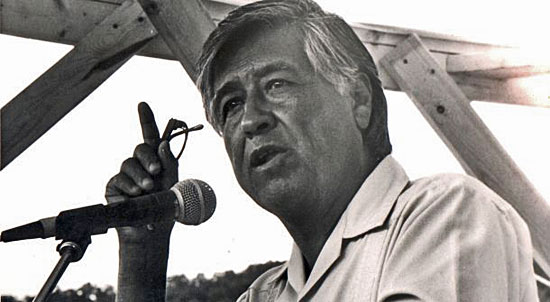
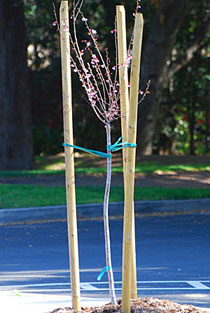
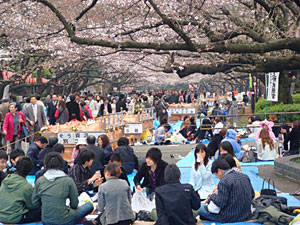
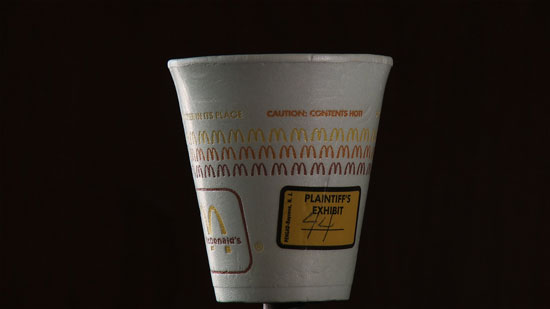
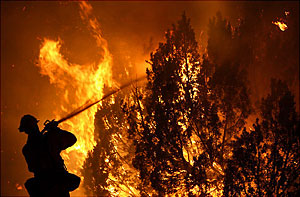
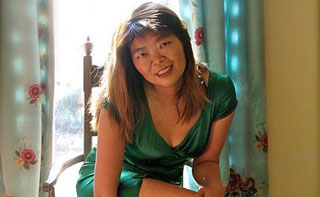








 Check for the latest closure information
Check for the latest closure information








